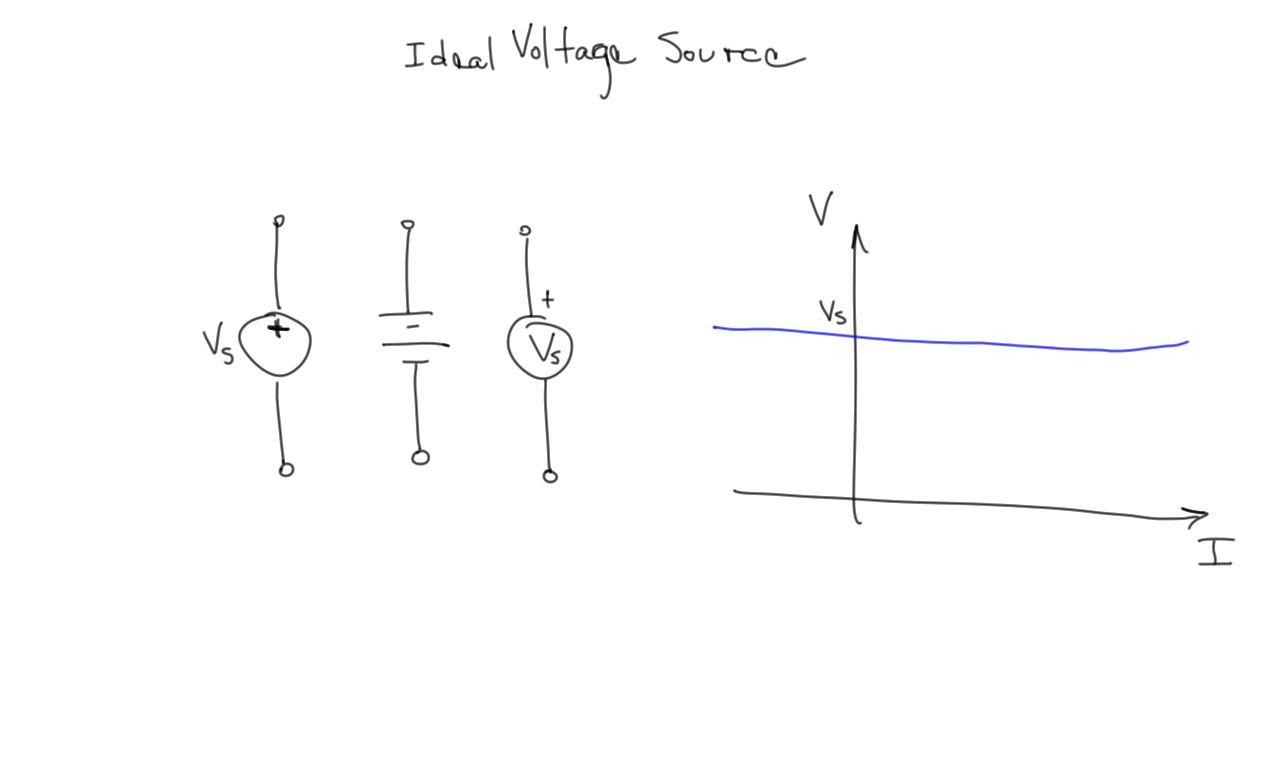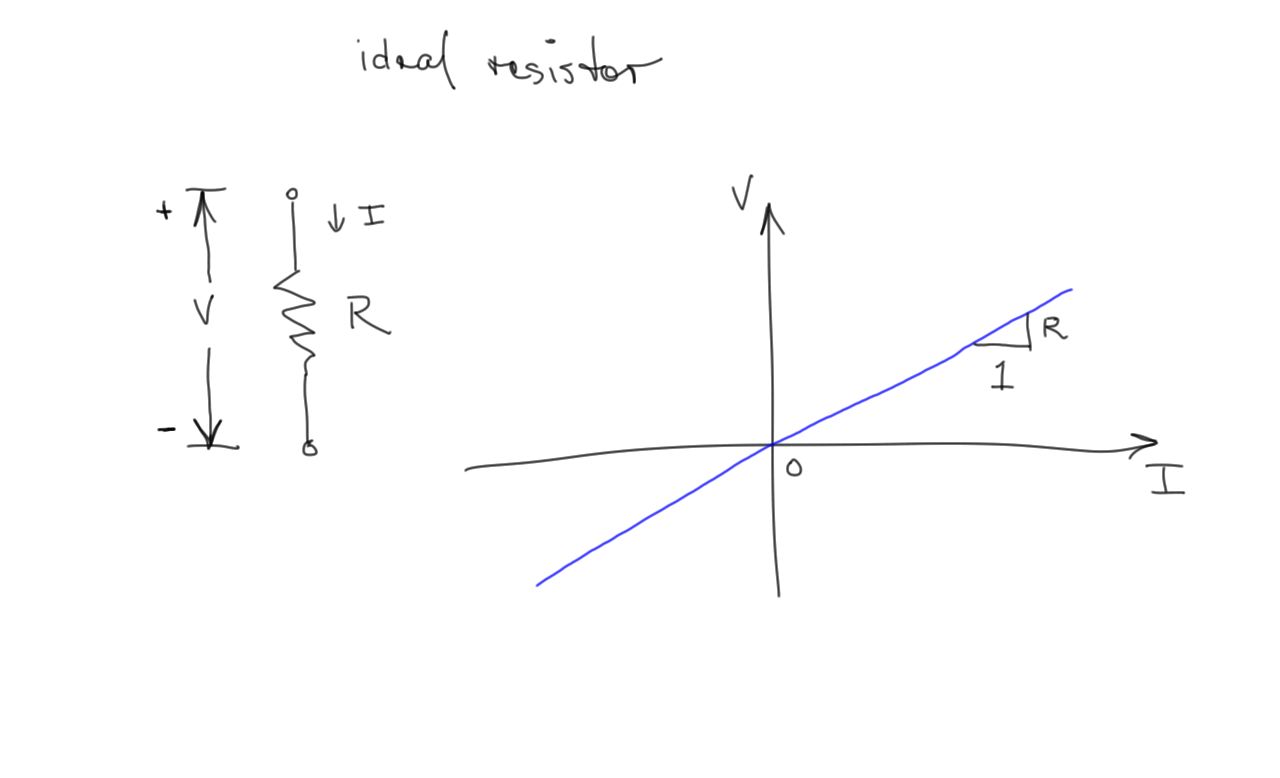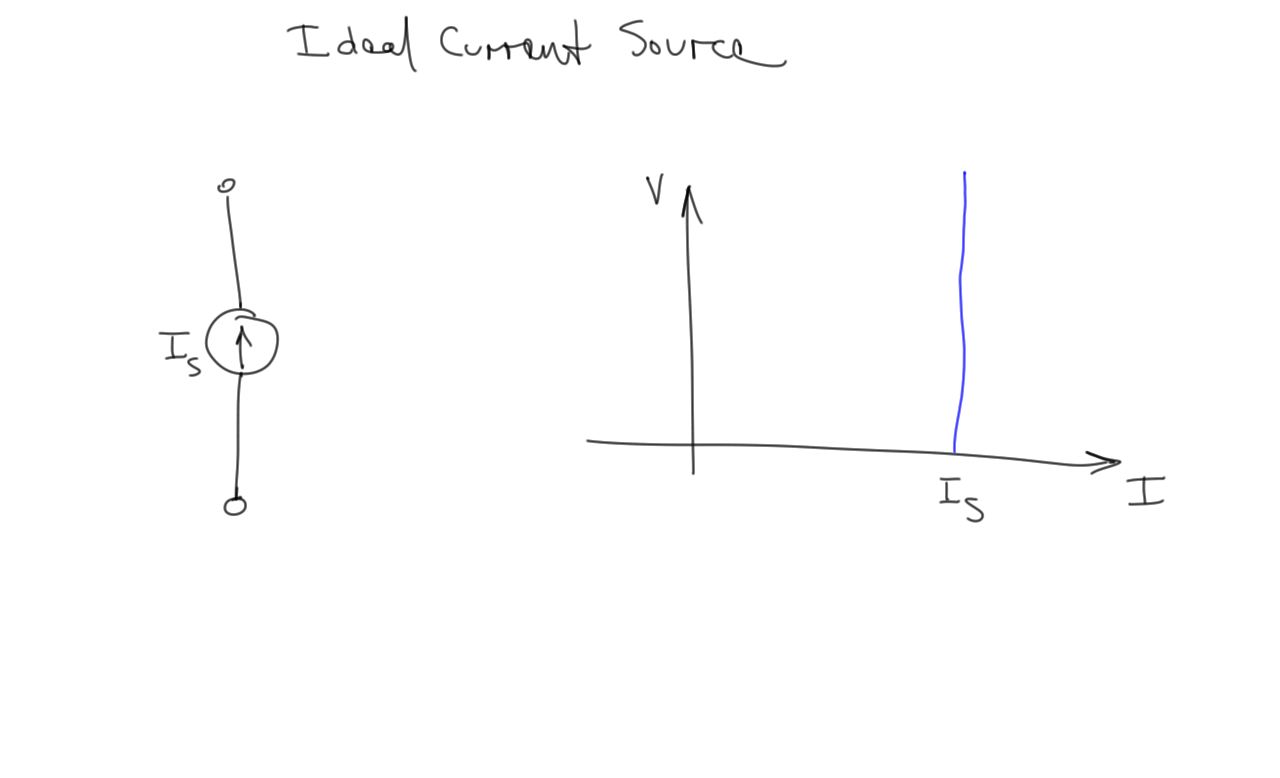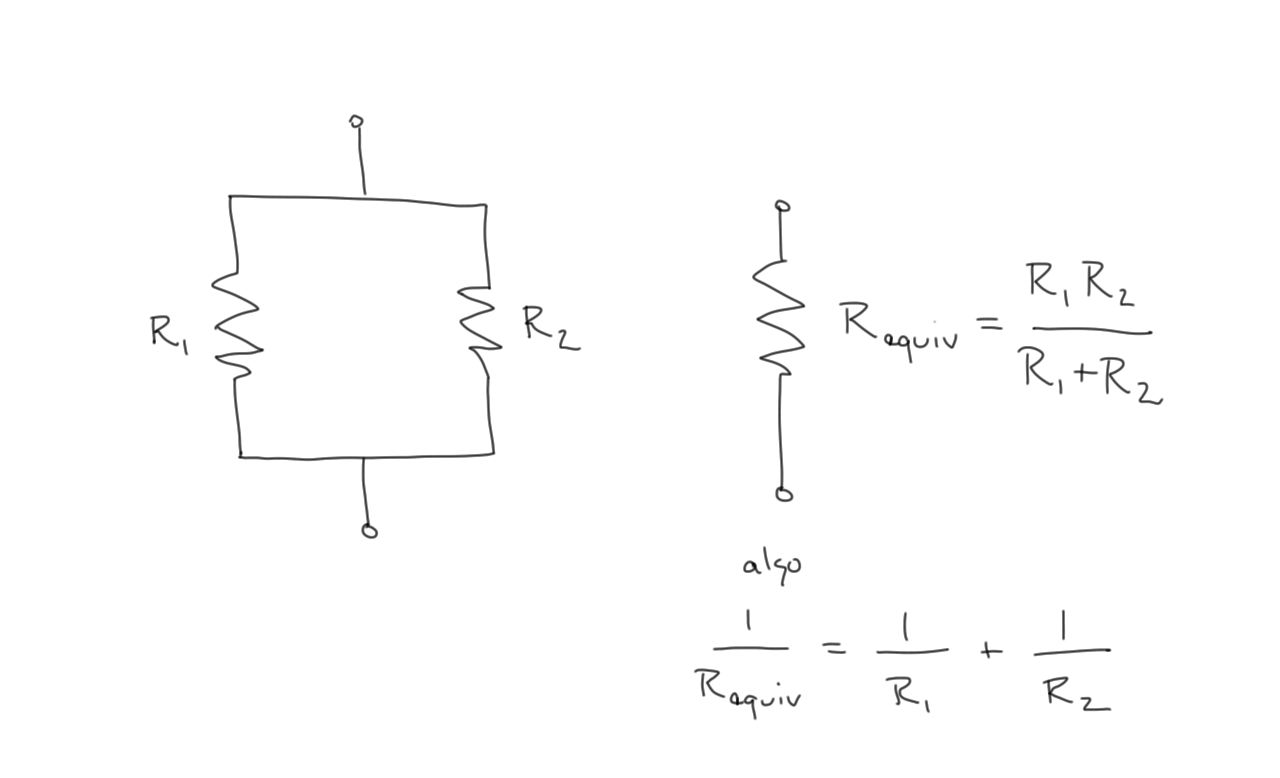Circuits and Ohm’s Law
Circuits are an idealized representation of a real electrical system that aids analysis.
Simplifying assumptions include:
- use of ideal elements in place of physical elements
- ideal wires with zero resistance
Ideal elements
Idealized circuit representation
- Lines have no resistance and uniform voltage
- Real elements (heaters, filaments, batteries) are represented as ideal models
IV Curve
IV curves show the voltage value for a given current.
Ideal Voltage Source
- An ideal voltage source can deliver any amount of current while holding its voltage constant.

Ideal Resistor
An ideal resistor obeys Ohm’s Law, V=IR 
Ohm’s Law
V = IR The current in a resistor is proportional to the voltage across it. The constant of proportionality is the resistance.
Ideal Current Source
- An ideal current source delivers a fixed amount of current no matter the voltage at its terminals

Kirchhoff’s Current Law
- The sum of currents flowing into a node must equal the sum of the currents leaving the node at any instant.
- Water flow or automobile traffic provide some intuition.
Kirchhoff’s Voltage Law
- The sum of the voltages around any loop of a circuit at any instant is zero.
- Hiking a trail provides some intuition.
Equivalent resistances
- We can use Ohm’s Law and Kirchoff’s Laws to determine an equivalent resistance to model a network of resistors.
Resistors in series
- Resistors in series have the same current flowing through each one

Resistors in parallel
- Resistors in parallel have the same voltage across their terminals
